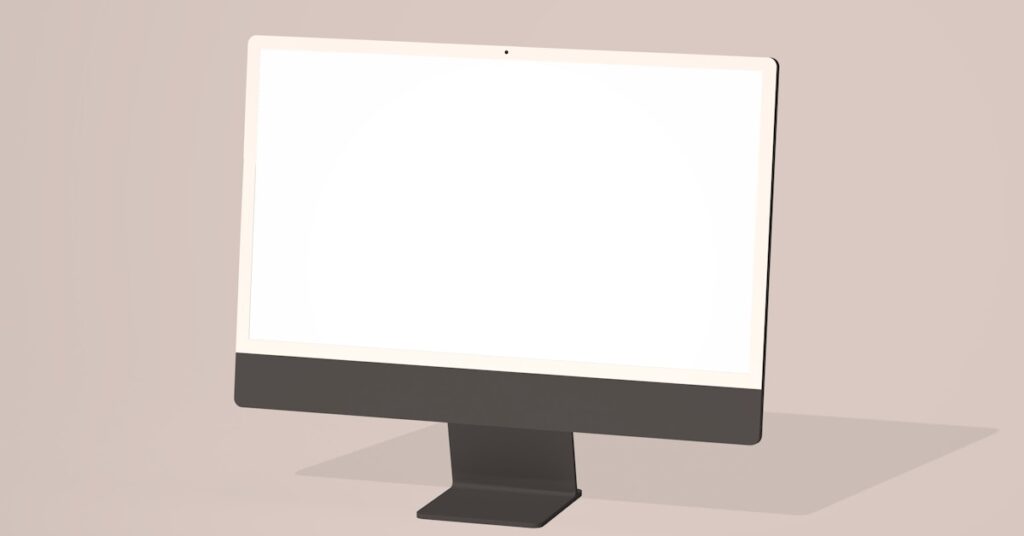Struggling with messy data integrations?
Connecting disparate systems often feels like forcing mismatched puzzle pieces together. It’s a frustrating and time-consuming process that slows everything down.
The real danger is that manual mapping leads to costly errors and data inconsistencies, which directly threaten your business intelligence and operational integrity.
According to Precisely, 64% of organizations cite data quality as their top challenge. This proves you aren’t alone in the struggle for accurate, reliable data.
But here’s the good news. The right tools can automate your data mapping process, ensuring consistency and saving your team countless hours.
In this article, I’ll break down the best data mapping software to solve these challenges. We’ll explore options that streamline your most complex integrations.
You’ll discover how to finally achieve data consistency, eliminate manual effort, and gain the trustworthy insights your business needs to grow.
Let’s get started.
Quick Summary:
| # | Software | Rating | Best For |
|---|---|---|---|
| 1 | Informatica → | Enterprise-scale organizations | |
| 2 | Altova → | Data professionals & mid-sized firms | |
| 3 | Talend → | Flexible deployment businesses | |
| 4 | Boomi → | Mid to large enterprises | |
| 5 | Jitterbit → | IT & marketing teams |
1. Informatica
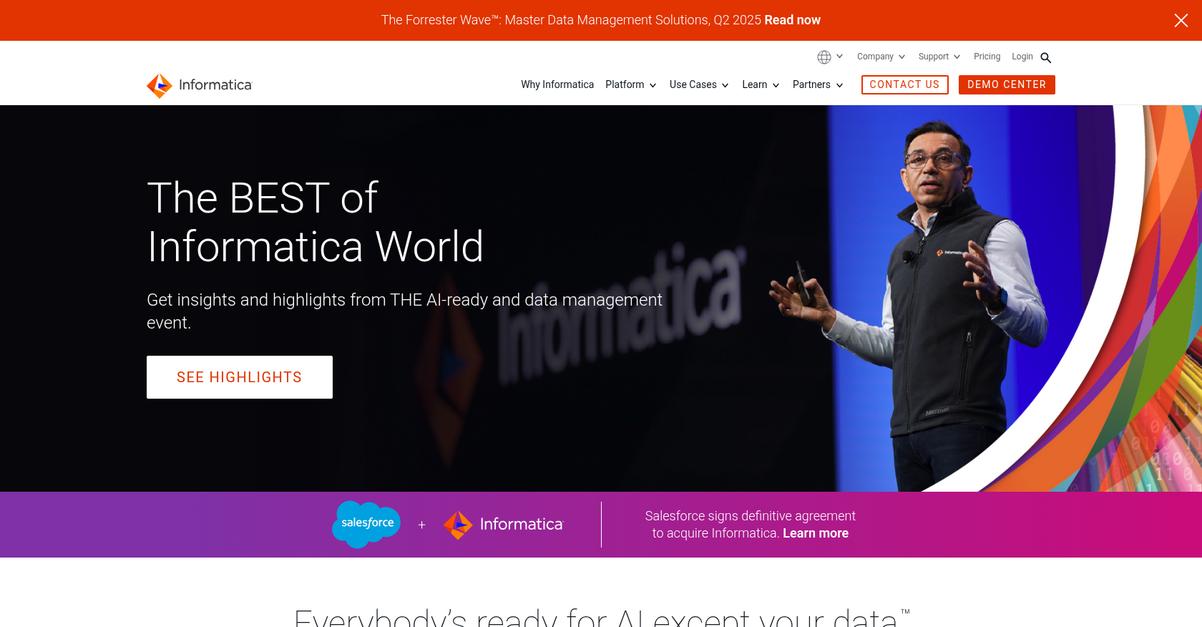
Is your data ready for AI?
Informatica helps you manage the entire data lifecycle, from ensuring data health to supporting enterprise use cases with AI-powered cloud data management.
This means you can put the right data at everyone’s fingertips, making it easier to deliver trusted data for analytics and AI initiatives.
Here’s how to create business value faster.
Informatica’s Intelligent Data Management Cloud, powered by CLAIRE AI, simplifies data access and automates labor-intensive tasks. This solution ensures your data is AI-ready with enterprise-level scalability, security, and compliance, helping you achieve measurable return on data investments.
You can orchestrate, unify, govern, and share data across multi-cloud and hybrid environments through 50,000+ metadata-aware connections. Additionally, Informatica’s data catalog, data quality, and MDM & 360 applications help establish greater trust in your data and optimize investments with flexible pricing.
The result is data everyone can trust.
If you’re looking to transform your data into actionable strategies, my article on best campaign management software provides valuable guidance.
Key features:
- Intelligent Data Management Cloud (IDMC): Leverages CLAIRE AI to automate data management tasks, ensuring AI-readiness, enterprise scalability, and compliance for various use cases.
- Comprehensive Data Services: Offers data cataloging, integration, API and app integration, data quality and observability, and robust governance for secure and unified data.
- Multi-Cloud & Hybrid Connectivity: Provides over 50,000 metadata-aware connections for seamless data orchestration and unification across diverse cloud and on-premise environments.
Informatica features, pricing, & alternatives →
Verdict: Informatica stands out as a leading best data mapping software, recognized by Gartner for data integration and iPaaS, which shows its strong capabilities. Its CLAIRE AI-powered Intelligent Data Management Cloud addresses complex data challenges by automating processes, ensuring data quality, and providing global-scale connectivity for trusted data.
2. Altova

Struggling with complex data integration challenges?
You need a tool that can simplify any-to-any data conversion, integration, and ETL processes. Altova MapForce is a graphical data mapping solution designed for this.
This software helps you navigate disparate data sources, ensuring your data remains consistent and accurate. You’ll gain streamlined processes that automate data mapping for better business intelligence.
Here’s how Altova provides solutions.
Altova MapForce offers graphical, any-to-any data conversion, making data integration elegant and easy. You can convert between diverse formats including XML, JSON, PDF, databases, EDI, and Excel.
MapForce ensures accurate and real-time insights by allowing you to instantly transform data. Its AI-ready capabilities mean you can automate complex data integration and ETL processes, saving valuable time.
Additionally, Altova MapForce Server automates these projects, offering high-performance, scalability, and no extra “connectors,” which significantly reduces costs compared to other solutions. This allows your team to focus on innovation.
The result is scalable, efficient workflows.
Beyond data mapping, my article on best API design tools provides valuable insights for streamlining your development workflows.
Key features:
- Any-to-any data conversion: Graphically map and convert data between diverse formats like XML, JSON, databases, Excel, and Web services.
- AI-ready data integration: Leverage AI-powered capabilities to streamline and automate data mapping, transformation, and ETL processes for efficiency.
- High-performance automation: Utilize MapForce Server for scalable, high-performance automation of data integration and ETL projects.
Altova features, pricing, & alternatives →
Verdict: Altova MapForce stands out as a best data mapping software due to its graphical, AI-ready capabilities for any-to-any data conversion and integration. Its ability to automate processes via MapForce Server offers exceptional performance and cost-effectiveness, helping data professionals achieve streamlined and accurate data workflows.
3. Talend

Struggling with complex data integration challenges?
Talend’s Data Fabric unifies data integration, quality, and governance into a single, low-code platform. This means you can easily manage data from virtually any source.
It eliminates manual inefficiencies, ensuring your data remains consistent and accurate. You gain peace of peace that your operations run smoothly.
Here’s how you get streamlined processes.
Talend delivers a complete, flexible, and trusted end-to-end platform. It supports your entire data management needs, from integration to delivery, regardless of your data environment.
You can deploy it on-premises, in the cloud, or in hybrid-cloud setups, giving you ultimate flexibility. Plus, it works with leading technology providers like AWS and Snowflake, helping you get more value from your existing data ecosystem. This comprehensive support drives clear, predictable value, all while maintaining security and compliance.
The result is automated data mapping, empowering accurate and real-time insights that ultimately drive better business intelligence and innovation for your organization.
Key features:
- Unified Data Fabric: Combines data integration, quality, and governance in one low-code platform, working with virtually any data source or architecture.
- Flexible Deployment: Deploys on-premises, cloud, multi-cloud, or hybrid-cloud environments, adapting to your specific data infrastructure needs.
- Trusted Data Foundation: Supports security and compliance, ensuring clear, predictable value and reliable data for AI, ML, and analytics solutions.
Talend features, pricing, & alternatives →
Verdict: Talend’s unified Data Fabric, with its complete and flexible deployment options, makes it a top contender for the best data mapping software. It streamlines data integration, enhances data quality, and ensures governance, turning disparate data into reliable business outcomes, just like how one customer unified 85,000 data sources to enhance engagement.
4. Boomi
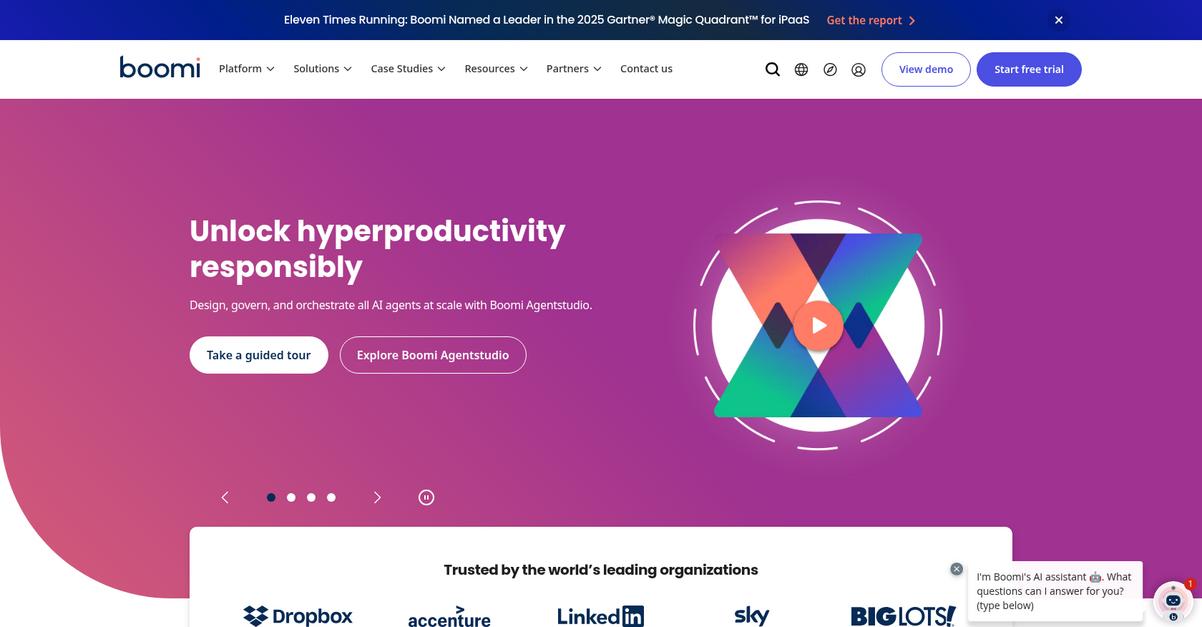
Struggling with complex, disparate data sources?
Boomi’s platform unifies your applications and data, simplifying your integration challenges. This means you can connect everything from SAP to Salesforce.
You can finally overcome compatibility hurdles and manual mapping inefficiencies. It’s about securing, syncing, and trusting your data.
Time to conquer your API chaos.
Boomi solves this with a single platform for integration, API, data, and AI Agent Management. Their data management capabilities allow you to integrate and govern data at scale, building automated ELT data pipelines.
You can achieve a synchronized, 360-degree view of your data, which is crucial for operational and analytical initiatives. Additionally, Boomi AI Agents automate frictionless business processes, enhancing your productivity by deploying AI agents for rapid automation.
The result is a secure and scalable foundation for trusted data, eliminating errors and compliance risks.
While discussing effective data management, you might also be interested in my guide on best data visualization tools to accelerate your insight.
Key features:
- Integration & Automation: Connect your applications and data with AI agents and a vast library of over 1.5k pre-built connectors, simplifying complex business processes.
- Data Management: Establish a foundation for trusted data by integrating and governing data at scale, ensuring synchronized, 360-degree views for operational and analytical insights.
- API Management: Design, secure, and manage APIs with flexibility and scale, leading agentic transformation with total API control and fortified governance.
Boomi features, pricing, & alternatives →
Verdict: Boomi is the #1 trusted choice for integration and automation, making it a compelling option for the best data mapping software. It delivers a reported 410% ROI and is relied upon by over 23,000 global customers for its comprehensive platform that streamlines data integration challenges, ensuring trusted data and increased productivity.
5. Jitterbit
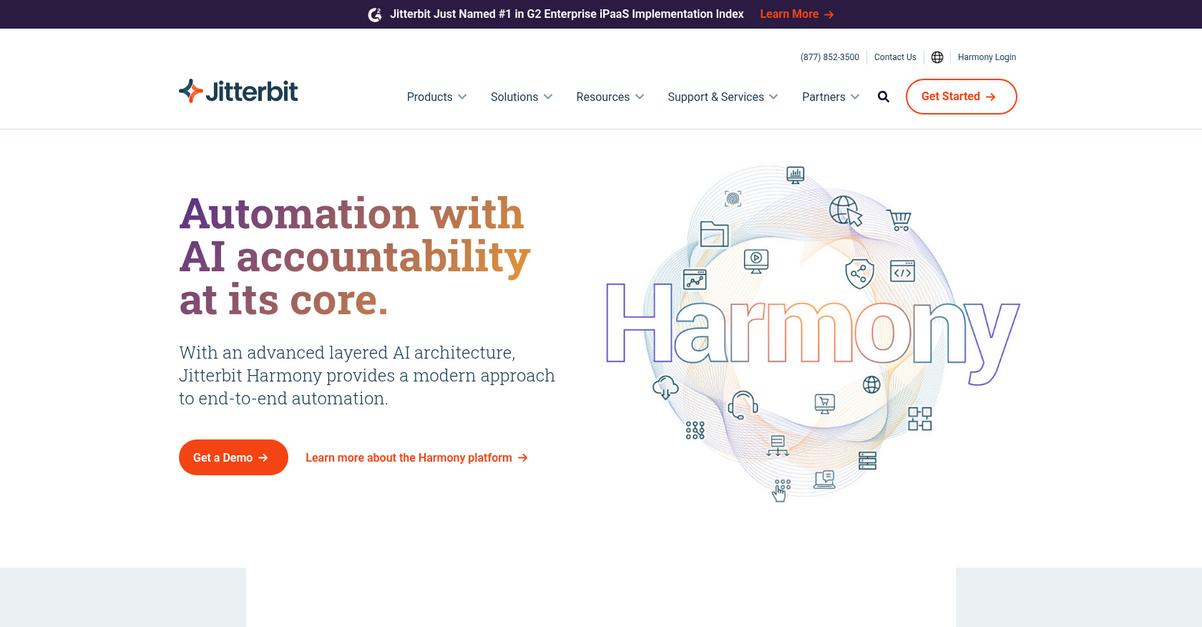
Tired of data integration headaches?
Jitterbit Harmony offers a unified AI-infused low-code platform for integration, orchestration, and automation. This means you can simplify complex data challenges.
It helps you overcome compatibility issues and manual mapping inefficiencies with its comprehensive solution. You’ll achieve seamless data migration and transformation workflows.
Here’s how Jitterbit helps.
Jitterbit Harmony provides a modern, secure approach to end-to-end business automation. This platform supports crucial roles like IT, Finance, and Marketing by integrating applications across your business.
You can connect thousands of SaaS, on-premise, and cloud applications in just days, which streamlines workflows and creates end-to-end process automation. The drag-and-drop, pre-built connectors make this process virtually effortless, helping you manage data more effectively. Additionally, Jitterbit also offers solutions like Salesforce Data Loader to simplify managing your Salesforce data, further enhancing efficiency and accuracy across your operations.
The result is efficient, accurate, and scalable data operations.
Key features:
- AI-infused low-code platform: Offers a unified environment for integration, orchestration, automation, and application development to streamline your processes.
- Drag-and-drop pre-built connectors: Enables effortless integration with thousands of SaaS, on-premise, and cloud applications to quickly connect systems.
- End-to-end business automation: Provides a modern and secure approach to automate various business workflows, improving efficiency and accuracy across your organization.
Jitterbit features, pricing, & alternatives →
Verdict: Jitterbit Harmony stands out as a strong contender for the best data mapping software because of its AI-infused low-code platform. Its ability to automate data transfer, simplify Salesforce data management, and provide drag-and-drop connectors for thousands of applications makes it an effective solution for streamlining your data integration needs.
6. SnapLogic
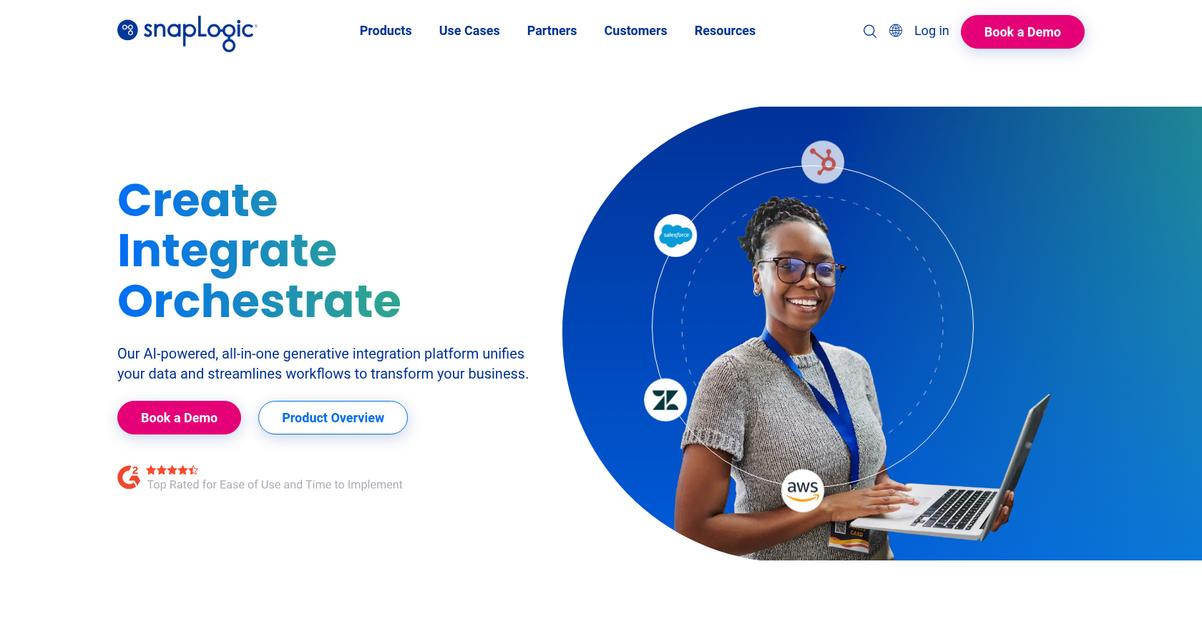
Struggling with complex data integration challenges?
SnapLogic offers an all-in-one data and application integration platform designed to simplify your workflows. This means you can easily mobilize data to the cloud using visual ETL/ELT.
You will find it addresses common pain points like manual mapping inefficiencies, helping you to automate entire ecosystems of applications, databases, and APIs.
Here’s how you can solve it.
SnapLogic empowers you to unify your data and streamline workflows with its AI-powered generative integration platform. It provides pre-built integrations, called Snaps, which make code-free integration possible.
With over 1,000 Snaps available, you can automate complex business processes between cross-functional groups. Additionally, SnapLogic AI helps you build enterprise-grade agents and automations, further enhancing your productivity across departments like HR, sales, and finance, allowing you to trigger key actions and gain critical insights in minutes, not days.
The result is increased autonomy and productivity for your business teams.
Key features:
- AI-powered platform: Build enterprise-grade agents and automations for data and application integration, unifying your data and streamlining workflows.
- Pre-built Snaps: Leverage over 1,000 pre-built integrations to easily create code-free workflows and complex business processes across various systems.
- Visual ETL/ELT & Reverse ETL: Mobilize data to the cloud with intuitive visual tools, simplifying data automation and integration processes.
SnapLogic features, pricing, & alternatives →
Verdict: SnapLogic stands out as a strong contender for the best data mapping software because its AI-powered, all-in-one platform with over 1,000 pre-built Snaps significantly reduces integration complexity. It offers visual ETL/ELT capabilities and automates workflows across various departments, demonstrating a 181% customer ROI and $3.3 million in benefits over three years according to Forrester.
Conclusion
Data integration shouldn’t be a struggle.
Choosing the right software is a huge challenge. This can stall projects, leaving your organization stuck with inefficient manual processes and messy, untrustworthy data.
The proof is in the results. RapidiOnline notes that real-time data integration is key for harnessing actionable insights. This directly addresses the operational frustrations that hold your business back from responding to market demands.
Here’s what I recommend for you.
Based on my review, Informatica is the clear winner. Its AI-powered platform automates those tedious mapping tasks, ensuring your data is always reliable and ready.
If you’re evaluating options beyond just mapping, my guide on best data integration software provides further insights.
What I find most impressive is its Intelligent Data Management Cloud. When you implement the best data mapping software like Informatica, you get enterprise-grade security and scalability.
I strongly suggest you book a free demo of Informatica to see its AI-powered capabilities in action. It’s a real eye-opener.
You’ll turn data into strategy faster.

